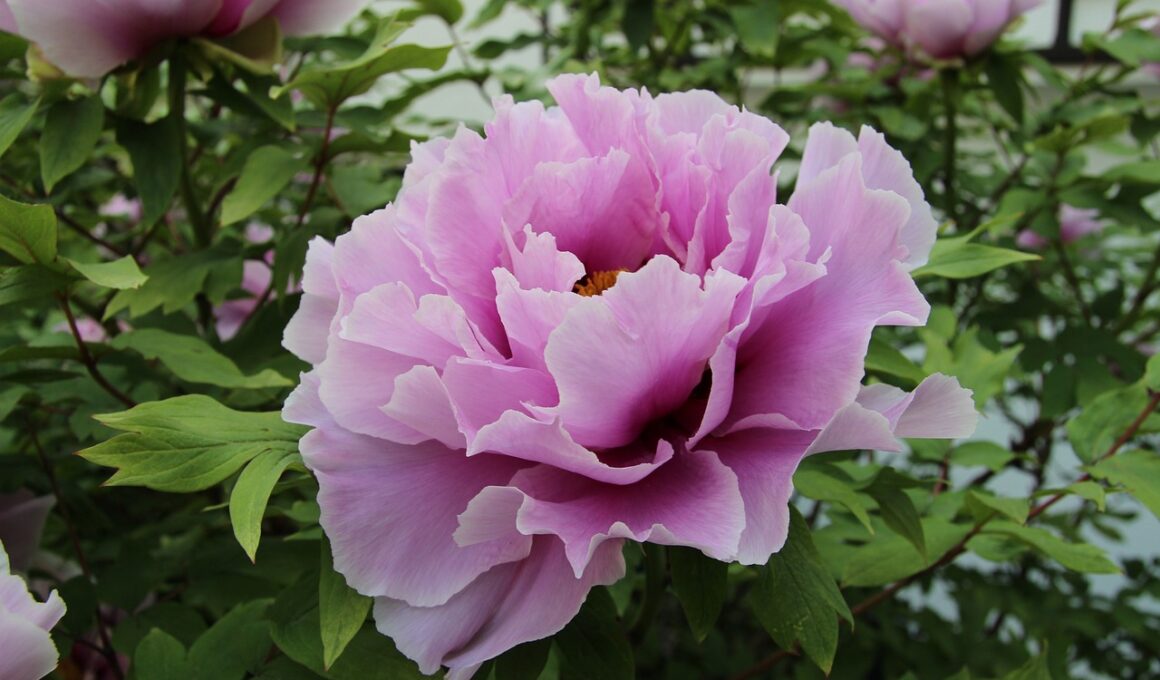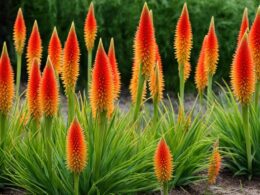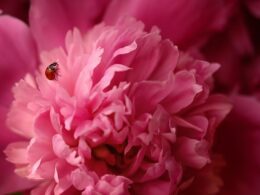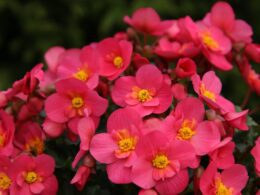Are you wondering how long your perennials will last in your garden? It’s important to know the lifespan of your plants so you can plan ahead for replacements or new additions.
Fortunately, most perennials can live for several years with proper care and maintenance. Perennials are plants that come back year after year, unlike annuals that only last for one growing season.
While the lifespan of perennials varies depending on the species, there are certain factors that can affect how long they live. By understanding these factors and taking the necessary steps to care for your plants, you can help ensure they live a long and healthy life in your garden.
Understanding the Lifespan of Perennials
Discovering the lifespan of perennials is crucial for any gardener looking to cultivate a thriving garden year after year. Perennial longevity varies greatly depending on plant genetics, environmental factors, and care.
While some perennials can live for decades, others may only last a few years. Perennial longevity is largely determined by genetics. Some perennials, such as peonies and delphiniums, can live for up to 50 years or more. Others, like asters and chrysanthemums, may only last 3-5 years.
It’s important to research the lifespan of the specific perennials you plan to plant so you can plan for replacements and ensure a healthy, long-lasting garden. Factors such as soil quality, water availability, and weather conditions also play a role in the lifespan of perennials.
Proper care and maintenance can prolong the life of your perennials and help them thrive. Regularly fertilizing, watering, and pruning your plants can go a long way in ensuring their longevity. By understanding the factors that contribute to the lifespan of perennials, you can create a garden that will last for years to come.
Factors That Affect the Lifespan of Perennials
When it comes to the lifespan of perennials, there are three key factors that can significantly impact their longevity.
First, the climate and growing conditions in your area can play a major role in determining how long your plants will live.
Second, the specific species and variety of your perennials can also influence their lifespan.
Finally, the amount of maintenance and care you provide to your plants can make a big difference in how long they thrive.
Climate and Growing Conditions
To keep your perennial garden thriving, it’s important to take note of the climate and growing conditions in your area. Perennials thrive in different temperatures, so it’s crucial to know the hardiness zone of your region. This will help you choose the right type of plant that can withstand the cold or heat.
Additionally, the soil quality is another factor to keep in mind. Make sure to test the soil pH level, as some perennials prefer acidic soil while others require alkaline soil. The right soil conditions can help your plants grow healthier and stronger.
Another vital factor to consider is watering frequency. Perennials require consistent moisture, but overwatering can lead to root rot and other fungal diseases. On the other hand, underwatering can cause the plants to wilt and die. It’s important to find the right balance and water them regularly, especially during hot and dry seasons.
Mulching can also help retain moisture in the soil and prevent evaporation. By taking care of your perennials’ needs, you can ensure that they will live long and thrive in your garden.
Species and Variety
Now it’s time for you to explore the wide range of species and varieties available for your perennial garden. You can cultivate perennials with different colors, shapes, sizes, and textures to create a vibrant and diverse display that will impress all who see it.
Some popular perennial gardening trends include creating themed gardens, using native plants, and incorporating edible perennials. When selecting species and varieties for your garden, consider your climate and growing conditions, as well as the plants’ lifespan. Some perennials may only last a few years, while others can live for decades.
You can also choose between early, mid, and late blooming perennials to extend your garden’s season of interest. With so many options available, you can create a perennial garden that suits your style, personality, and needs.
Maintenance and Care
Take care of your perennial garden to ensure its beauty and vitality, so you can enjoy the satisfaction of nurturing a thriving and stunning landscape. Proper maintenance and care are essential to help your perennials live longer and healthier lives. Here are some tips to keep your garden in good shape:
- Regular pruning is necessary to keep your perennials healthy and encourage new growth. Deadheading, cutting back, and removing diseased or damaged foliage are all part of proper pruning. Be sure to use sharp tools and make clean cuts to avoid damaging the plant.
- The right soil composition is crucial for the health of your perennials. Ensure that the soil is well-draining and nutrient-rich, with a pH level between 6 and 7. You can add compost, mulch, or organic fertilizers to improve soil quality. Test your soil every few years to identify any deficiencies or imbalances.
Remember that each perennial variety has unique care requirements, so research your plants and adjust your maintenance practices accordingly.
By taking care of your garden, you’ll be rewarded with vibrant blooms and healthy foliage year after year.
Is There a Perennial Flower That Can Live for 100 Years?
Is there a perennial flower that can live for 100 years? Yes, long-living flowers do exist in nature. The century plant (Agave americana) is a prime example. This drought-resistant succulent produces a magnificent flower spike only once in its lifetime, often taking decades to bloom. Remarkably, the plant dies shortly after flowering, leaving behind new offsets to continue the cycle of life.
Common Mistakes That Can Shorten the Lifespan of Perennials
If you want your perennials to thrive for as long as possible, you should avoid these common mistakes that can cut their lifespan short.
First, overwatering is a big no-no when it comes to perennials. These plants require well-draining soil, so if the soil is constantly wet, their roots will rot and the plant will die. To prevent overwatering, make sure the soil is dry before watering and don’t water too frequently.
Second, soil quality is crucial for the health of your perennials. If the soil is poor, the plants won’t be able to absorb the nutrients they need to thrive. To improve soil quality, add organic matter like compost or manure and mix it into the soil before planting. This will help the soil retain moisture and nutrients, and provide a healthy environment for your perennials to grow.
Lastly, avoid cutting back your perennials too much. While some pruning is necessary, cutting back too much can weaken the plant and reduce its lifespan. Only remove dead or damaged growth and make sure to leave enough of the plant intact so it can continue to grow and thrive.
By avoiding these common mistakes, you can help your perennials live a long and healthy life.
Tips for Extending the Lifespan of Perennials
You can help your perennial plants thrive for years to come by following these simple tips.
First, consider companion planting. Certain plants have mutually beneficial relationships with others, such as marigolds repelling harmful insects from other plants. Additionally, planting certain herbs, like basil or mint, can help improve the flavor of neighboring vegetables while also deterring pests.
Secondly, soil amendments can greatly improve the health and longevity of perennial plants. Adding compost, manure, or other organic matter to the soil can help retain moisture, improve drainage, and provide essential nutrients. Additionally, using mulch around plants can help regulate soil temperature and reduce weed growth.
Lastly, proper pruning and maintenance can help extend the lifespan of your perennials. Deadheading spent flowers and removing damaged or diseased foliage can help prevent the spread of disease and keep the plant healthy. Additionally, dividing overcrowded plants and transplanting them to other areas can help prevent competition for resources and promote healthy growth.
To summarize, incorporating companion planting, soil amendments, and proper maintenance can greatly improve the lifespan of your perennial plants. By following these simple tips, you can ensure that your garden remains vibrant and healthy for years to come.
Choosing the Right Perennials for Your Garden
When choosing the right perennials for your garden, it’s important to consider their lifespan and growing conditions. Researching the specific needs of each plant can help ensure they thrive in your garden for years to come.
Consulting with a professional or experienced gardener can also provide valuable insight. Additionally, consider your personal preferences and goals for your garden to select perennials that will bring you joy and meet your needs.
Researching Lifespan and Growing Conditions
Discovering the ideal growing conditions is key to ensuring your perennial flowers thrive for years to come. When researching the lifespan of your chosen perennials, it’s important to note that the average lifespan can vary greatly depending on the species.
Here are three factors to consider when researching the ideal growing conditions for your perennials:
-
Soil: Different perennials thrive in different types of soil, so it’s important to research the soil requirements for each species. Some may require well-draining soil, while others may prefer soil with a higher clay content.
-
Sunlight: Perennials also have varying sunlight requirements, with some needing full sun exposure and others preferring partial shade. Ensure that you plant your perennials in an area that receives the appropriate amount of sunlight for their growth patterns.
-
Watering: The amount and frequency of watering can also have a significant impact on the lifespan of your perennials. Some perennials prefer moist soil, while others can tolerate drier conditions. Be sure to research the watering requirements for your chosen species and adjust your watering schedule accordingly.
Consulting with a Professional
Consulting with a professional can provide valuable insights into the specific needs and requirements of your chosen perennial flowers, ensuring they thrive in their ideal growing conditions. Professional recommendations can help you avoid common misconceptions that may negatively impact the lifespan of your perennials. For example, many people assume that all perennials have the same lifespan, but in reality, it varies greatly depending on the species and growing conditions.
A professional can help you identify the ideal growing conditions for your chosen perennials, such as the amount of sunlight, water, and soil pH. They can also provide recommendations on how to properly care for your perennials, including pruning, fertilizing, and pest management. By following these recommendations, you can extend the lifespan of your perennials and ensure they continue to thrive for years to come.
Considering Your Personal Preferences and Goals
You’ll want to think about what you personally enjoy and what your goals are for your garden as you choose which perennial flowers to plant.
If you love bright colors, for example, you might want to choose perennials that have striking blooms like peonies or black-eyed susans. On the other hand, if you prefer a more natural look, you might opt for perennials that have a more subdued color palette, like lavender or yarrow.
Your garden goals are also an important consideration when choosing perennials. If you want to create a low-maintenance garden, you might choose perennials that require minimal care and attention. Alternatively, if you want to attract pollinators like bees and butterflies, you might choose perennials that are known to be particularly attractive to these insects.
Whatever your personal preferences and garden goals may be, taking the time to choose the right perennials for your space can help ensure that your garden is a beautiful, thriving space for years to come.
Frequently Asked Questions
How do you know when a perennial has reached the end of its lifespan?
When it comes to perennials, it’s important to keep an eye out for signs of declining health. If your plant is showing yellow or brown leaves, wilted stems, or stunted growth, it may be reaching the end of its lifespan.
To ensure the health of your garden, it’s important to remove dead foliage promptly. This will not only prevent the spread of disease, but it will also allow for new growth and help to prolong the life of your perennials.
Keep a close watch on your plants and take action when necessary to ensure a thriving garden.
Can you revive a perennial that has started to decline or die?
Reviving perennials can be a challenging task, but with the right tips and tricks, it’s possible to bring them back to life. One common mistake to avoid is overwatering, as this can cause root rot and further damage the plant.
Instead, make sure the soil is well-draining and only water when the top inch of soil feels dry to the touch. Another tip is to prune back any dead or diseased foliage, as this can help the plant focus its energy on new growth.
Additionally, consider fertilizing the plant with a balanced fertilizer to provide essential nutrients. With patience and proper care, you may be able to revive your declining or dying perennial and enjoy its beauty for years to come.
How do you prepare perennials for winter to ensure their longevity?
To prepare your perennials for winter and ensure their longevity, there are a few important steps to take. First, consider mulching techniques to protect your plants from the cold.
A layer of mulch around the base of your perennials will help to insulate their roots and prevent them from freezing. Additionally, you can use frost protection methods such as covering your plants with blankets or burlap to shield them from the elements.
By taking these precautions, you can ensure that your perennials are well-protected and will continue to thrive for years to come.
Are there any natural remedies or treatments to prolong the lifespan of perennials?
Looking to prolong the lifespan of your perennials? Companion planting and soil amendments are two natural remedies that can help.
Planting certain species alongside your perennials can provide them with the right amount of shade, nutrients, and protection from pests.
Additionally, adding organic matter to the soil, such as compost or manure, can improve its structure and provide essential nutrients for your plants.
By taking these steps, you can ensure that your perennials have a better chance of thriving for years to come.
What are some common signs that a perennial is struggling and may not survive for long?
If you notice your perennial struggling, there are some common causes that may be at play. Poor soil quality, over or under-watering, pests, and diseases can all contribute to a plant’s decline.
To prevent these issues, make sure to plant in well-draining soil and water appropriately. Keep an eye out for any signs of pests or diseases and address them promptly.
If your plant is still struggling, it may be best to remove it to prevent any further spread of pests or diseases to neighboring plants. By taking these prevention tips, you can help ensure the longevity of your perennials.
Conclusion
So, now that you know how long most perennials live, it’s important to understand how you can extend their lifespan. By choosing the right perennials for your garden, taking care of them properly, and avoiding common mistakes, you can enjoy your beautiful flowers for many years to come.
Remember to plant perennials that are suited to your climate and soil conditions. Give them the right amount of sunlight and water, and make sure to keep the soil healthy and well-drained. Avoid overcrowding your plants, and be sure to prune them regularly to promote new growth.
With these simple tips, you can create a beautiful perennial garden that will thrive for years to come.
So, go ahead and start planning your garden today!









